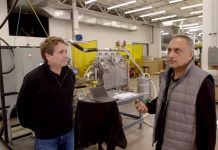Fingerprints are a proven method of being able to identify someone. Almost everyone has a unique fingerprint and this is a telltale marker that is left behind when a crime is committed. Law enforcement have been using fingerprinting for generations, but it wasn’t until the work of Sir Alec Jeffreys came to light that DNA fingerprinting became a viable reality. Born in 1950 and still working as a professor at the University of Leicester on occasion, though “officially” retired, his contributions to science will continue to resound throughout the generations to come.
Although Jeffreys calls his work in this area a “happy accident,” the results have been nothing short of extraordinary. He has been able to take his methods and prove the innocence of some people, the guilt of others, and even positively identify Nazi war criminals. Here is some of the other work of Jeffreys outside of his accomplishments in DNA fingerprinting.
1. DNA Profiling
Before there was DNA fingerprinting, Jeffreys and his team created DNA profiling in 1985. In this processes, a person’s variable minisatellites are types and this creates a profile that is rather unique for the individual. It isn’t as accurate as fingerprinting because it doesn’t focus on the few variables that exist within all DNA, but is the foundation of what modern DNA fingerprinting happens to be. This isn’t to be confused with profiling where databases of DNA information are stored by the government whenever samples are taken – this is actually something that Jeffreys opposes.
2. DNA Amplification
One of the early issues in the study of DNA was that everything had to be completed manually and there wasn’t much sensitivity to the specific nature of the process. With DNA amplification by the Polymerase Chain Reaction, an alternative marker system could be developed to help individualize DNA samples to create specific identification of suspects. In the current system, ten microsatellites and a gender marker are used through the amplification process and this is what creates the fingerprint that is stored and studied.
3. DNA Recombination
This is the process of where DNA molecules have the ability to change specific information between each other so that they can create a new combination of alleles. This has been the focus of Jeffreys work as of late and the potential of this work is incredible. From being able to cure genetic diseases by rewriting faulty genes to repairing DNA because of internal or external causes, many of today’s worst diseases could be stopped before they even start with the outcomes of his work in this area.
Although no discoveries have been made as of yet, Jeffreys research and work in this specific area of study will at the bare minimum be the foundation of future efforts in this area of medical science. He was knighted for his contributions and many are grateful for his DNA fingerprinting because it has proven their innocence. What will the future hold for Sir Alec Jeffreys? Only time will tell.
Strong proponent of individual liberty and free speech. My goal is to present information that expands our awareness of crucial issues and exposes the manufactured illusion of freedom that we are sold in America. Question everything because nothing is what it seems.




















